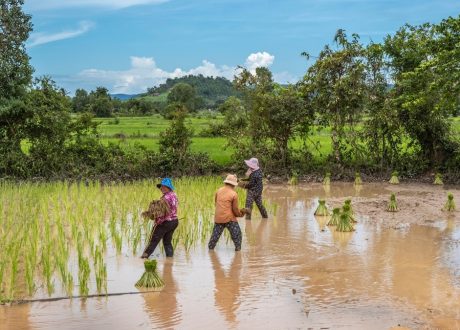
New ISO ESG Implementation Principles provide int’l guidance to streamline ESG practices
New ESG Implementation Principles launched the International Organization for Standardization (ISO) at the 29th United Nations ...

New estimates released by UNICEF and the World Health Organization (WHO) said that about 2.8 million pregnant women and newborns die every year.
According to these estimates, about 6.2 million children under 15 years died in 2018, and over 290 000 women died due to complications during pregnancy and childbirth in 2017. Of the total child deaths, 5.3 million occurred in the first 5 years, with almost half of these in the first month of life.
Children face the highest risk of dying in the first month, especially if they are born too soon or too small, have complications during birth, congenital defects, or contract infections. About a third of these deaths occur within the first day and nearly three quarters in the first week alone.
“Around the world, birth is a joyous occasion. Yet, every 11 seconds, a birth is a family tragedy,” said Henrietta Fore, UNICEF Executive Director. “A skilled pair of hands to help mothers and newborns around the time of birth, along with clean water, adequate nutrition, basic medicines and vaccines, can make the difference between life and death. We must do all it takes to invest in universal health coverage to save these precious lives.”
The estimates also show vast inequalities worldwide, with women and children in sub-Saharan Africa facing a substantially higher risk of death than in all other regions.
Levels of maternal deaths are nearly 50 times higher for women in sub-Saharan Africa and their babies are 10 times more likely to die in their first month of life, compared to high-income countries.
In 2018, 1 in 13 children in sub-Saharan Africa died before their fifth birthday– this is 15 times higher than the risk a child faces in Europe, where just 1 in 196 children aged less than 5 die.
Women in sub-Saharan Africa face a 1 in 37 lifetime risk of dying during pregnancy or childbirth. By comparison, the lifetime risk for a woman in Europe is 1 in 6500. Sub-Saharan Africa and Southern Asia account for around 80% of global maternal and child deaths. Countries in conflict or humanitarian crisis often have weak health systems that prevent women and children from accessing essential lifesaving care.
The world has made substantial progress in reducing child and maternal mortality. Since 1990, there has been a 56% reduction in deaths of children under 15 years from 14.2 million deaths to 6.2 million in 2018. Countries in Eastern and South-Eastern Asia have made the most progress, with an 80% decline in under-five deaths.
And from 2000 to 2017, the maternal mortality ratio declined by 38%. Southern Asia has made the greatest improvements in maternal survival with a nearly 60% reduction in the maternal mortality ratio since 2000.
Belarus, Bangladesh, Cambodia, Kazakhstan, Malawi, Morocco, Mongolia, Rwanda, Timor-Leste and Zambia are some of the countries that have shown substantial progress in reducing child or maternal mortality. Success has been due to political will to improve access to quality health care by investing in the health workforce, introducing free care for pregnant women and children and supporting family planning. Many of these countries focus on primary health care and universal health coverage.
New ESG Implementation Principles launched the International Organization for Standardization (ISO) at the 29th United Nations ...
PUMA has already made strong progress in reducing its greenhouse gas emission over the past ...
The United Nations Trade and Development (UNCTAD) urged during the 29th United Nations Climate Change ...


اترك تعليقا